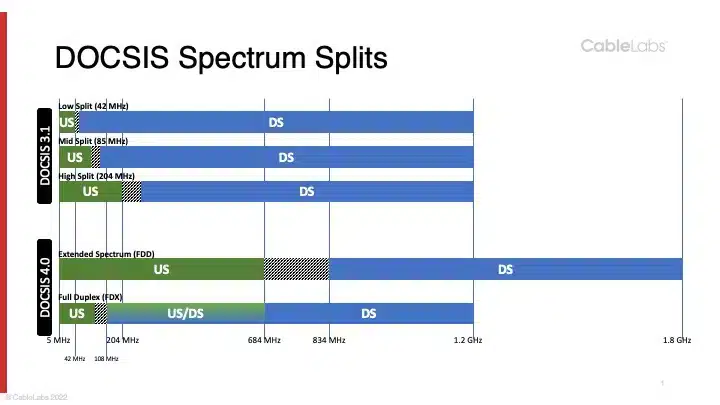Cox Communications plans to launch multi-gigabit service to half its base before year end. The services will be based on a combination of fiber broadband and hybrid fiber coax/DOCSIS, Ed Shrum, Cox vice president of wireline engineering, told Telecompetitor.
The HFC/DOCSIS infrastructure supporting the multi-gigabit services will have distributed access architecture (DAA) and mid-splits, Shrum said. The upgrades will not include DOCSIS 4.0. Cox expects to make DOCSIS 4.0 upgrades in the second half of 2025.
Distributed access architecture involves moving intelligence to the network edge by installing remote PHY or remote MAC PHY devices at the network node where optical transmissions are converted to radio frequencies for transmission over coax. DAA improves the signal-to-noise (SNR) ratio, thereby enabling cable operators to boost speeds.
“We have been deploying DAA for over five years,” Shrum said. “Cox was an early adopter of this architecture and the associated operational benefits.”
Mid-splits are used with HFC infrastructure that uses 1.2 GHz of spectrum within the coax portion of customer connections. With mid-splits, 85 MHz of spectrum is available for upstream communications.

“We’ve deployed 2-Gig capable mid-splits to roughly half our footprint and are now transitioning remaining sub-split areas to high-split, which will be followed by an upgrade to ESD [extended spectrum DOCSIS] 4.0,” Shrum said.
High splits expand the amount of spectrum available within the coax portion of the HFC connection to 204 MHz. Extended spectrum DOCSIS expands the amount of spectrum within the coax portion of the connection to 1.8 GHz, further boosting the speeds that the connection can support and increasing the spectrum available for upstream communications to 684 MHz.
Cox is currently trialing high splits in multiple markets and expects to expand throughout the year and deploy at scale in 2024, Shrum said.
Cable companies have been working hard to upgrade their HFC infrastructure to support higher speeds, particularly on the upstream path, as upstream traffic has been growing faster than downstream traffic and as fiber broadband providers increasingly offer symmetrical speeds.
Cox and other cable companies also are deploying fiber broadband in some areas. Where Cox uses fiber broadband, it is deploying XGS-PON capable of 10 Gbps symmetrical speeds, Shrum said.
Cox initially announced multi-gigabit plans in 2022 but offered few details at that time.
The company referenced plans to offer multi-gigabit service to half its base this year in a recent press release.
